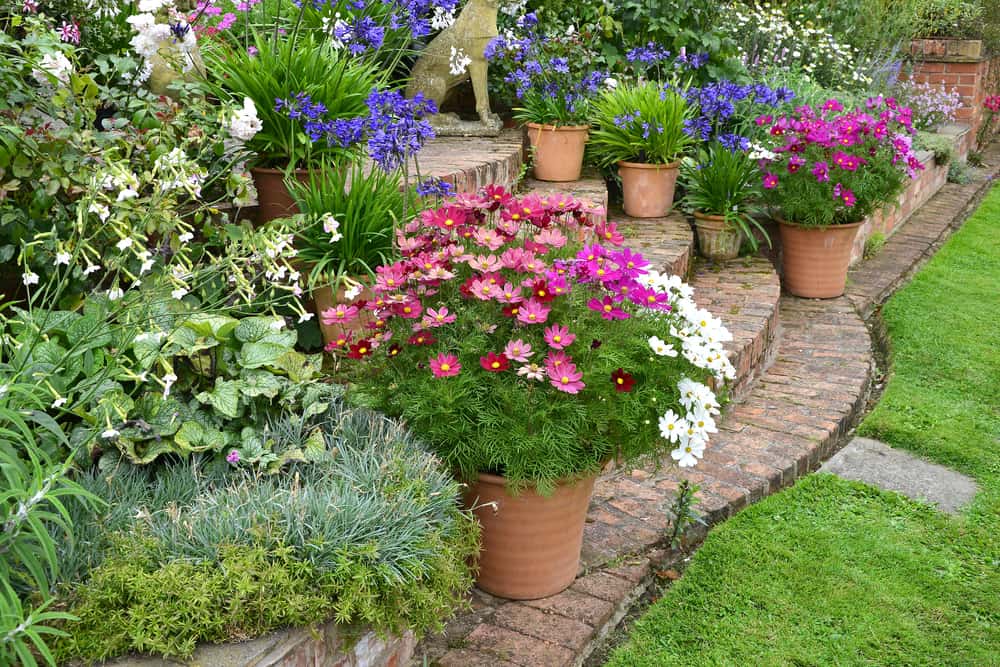
With hundreds of plant options, thousands of containers to choose from, and endless potential combinations, container gardens are a designer’s dream.
They are ideal for novices who may not have much gardening experience or outdoor space, and for experts who want to experiment and explore their creativity in the garden.
Container garden design is a matter of personal style and preference. Some like their garden neat, others like them wild. You may prefer foliage, while your neighbor favors flowers. That’s part of the excitement of design.
That being said, there are some general design principles that can make your containers, and the garden as a whole, look better.
These are not ‘rules’ (don’t let me stifle your inner creative genius) but they are suggestions or tricks that can elevate a container garden from basic to brilliant.
1. Consider Sizing
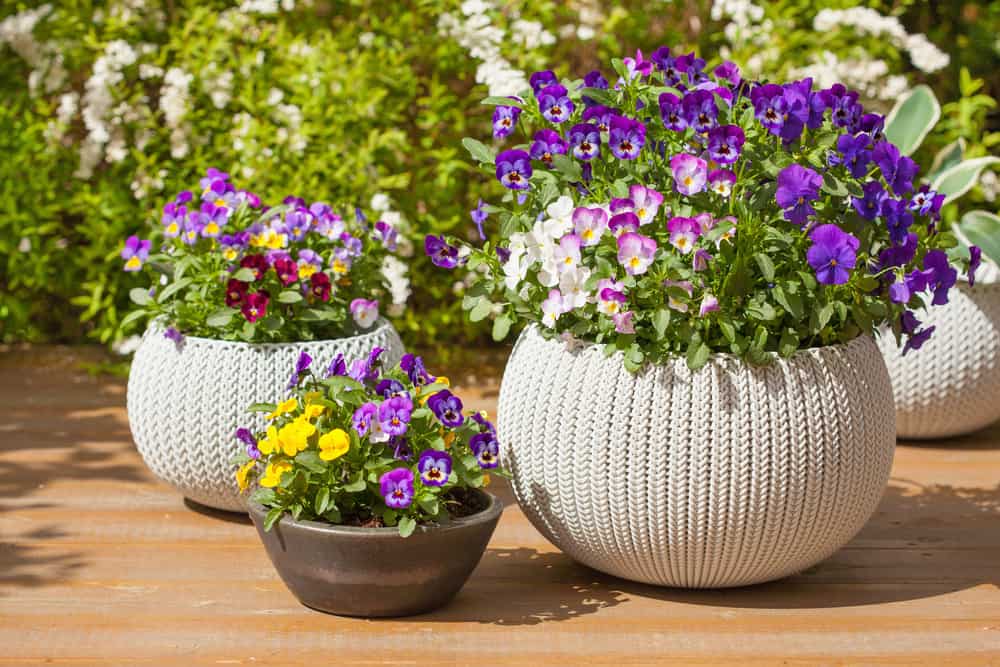
When it comes to container gardening, size definitely matters. This applies to the pots you choose, what you put in them, and how you place them in your container garden.
When choosing a pot, plant care should be your first priority. Your container should be large enough to accommodate plant growth, but not so large that the plant gets lost. The depth of the container can impact root growth too. You don’t want to fill a pot, only to find the plants outgrow it in a months’ time. You won’t like it, and the plants won’t like it either.
But care is not the only consideration when choosing the size of your containers. It also has an impact on design.
Small plants look even smaller in a pot that is too large. Similarly, small pots look even smaller in a large container garden. Balance sizing so your plants look healthy and abundant, not weak and diminished.
It is also possible to go too big. You don’t want your pot to be top-heavy or overflow out the sides. Keep the plant size around double the height and width of the pot at the most.
Finally, consider the sizes of your individual pots relative to one another in your container garden. An entire garden of pots the same size is likely to look one-note, no matter which plants you choose. Vary the sizes of your pots and the heights of the plants in them to draw the eye to different levels in the garden.
2. Play with Color
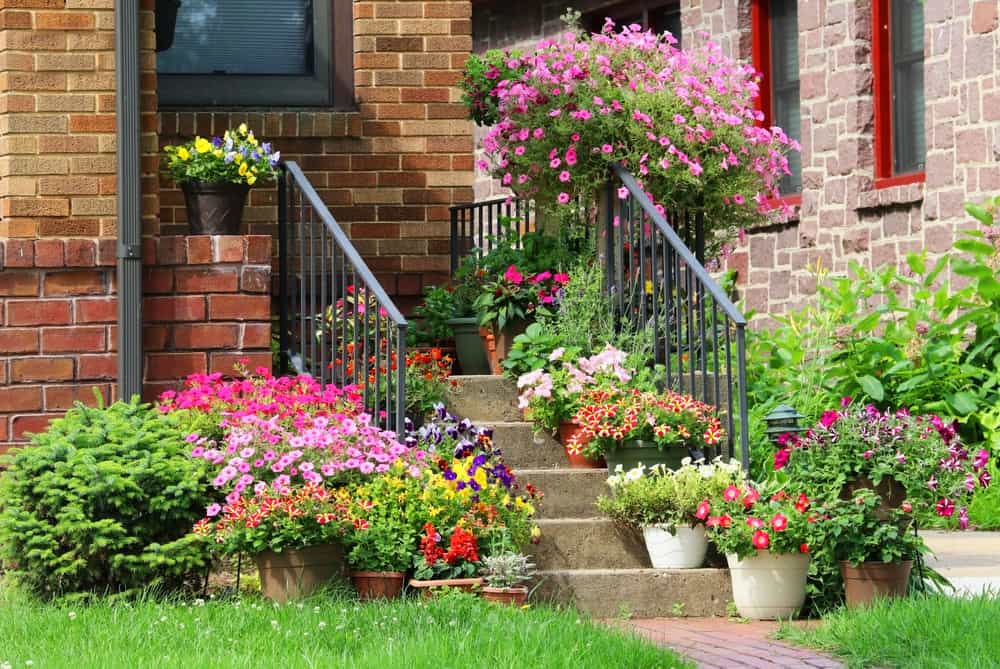
Experimenting with color is one of the highlights of container gardening. If you prefer harmonious, uniform color combinations, choose one or two colors to use throughout the garden.
The monochromatic look doesn’t have to be boring either – far from it. Choose flowers of the same color, but in different shades, to add variety without straying too far from your color palette. In container garden design and design in general, you’ll rarely go wrong when keeping it simple.
On the other end of the color spectrum, gardeners who prefer the bold and bright have the opportunity to go wild.
Stroll through your local nursery and you will come across flowers in any shade you can imagine – sometimes two or three shades on the same plant. Use this variety to your advantage. Pair contrasting colors of light and dark in the same pot, or find bi-color flowers that have a dramatic contrast built-in.
The color wheel is also an invaluable garden design tool. Place flowers with complementary colors (those opposite each other on the color wheel, like orange and blue) next to each other to intensify and brighten both.
The focus is often on the flowers, but don’t forget the foliage. Your containers should always look well designed – even when the plants aren’t flowering. There are hundreds of plants with colorful foliage ideal for containers. Use them to ensure your pots stand out at all times – not just over one season.
3. Don’t Ignore Texture
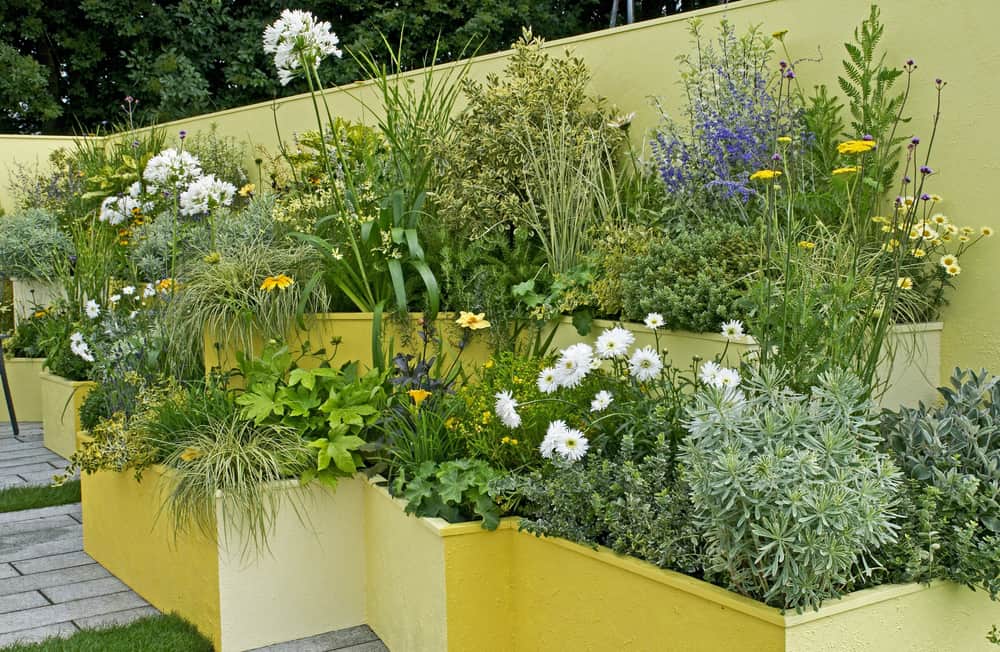
Color is often the first consideration in container garden design, but texture and structure can be just as impactful when used correctly.
Fine, delicate leaves can intensify bold, dominating flowers. Wispy grasses can soften structural plants. The goal is balance – the plants you choose should complement each other, not compete for attention.
Luckily, there is no shortage of fun, complementary textures to choose from. Bold, shiny plants have a completely different look to soft, fuzzy leaves and flowers (like the popular Lamb’s Ear). But somehow, they work together.
Spiky grasses or thistle-like plants can lessen the blur-like texture of a softer garden. Ensure the plants you place together in a pot, and all the plants in your container garden, display a wide variety in texture and structure.
4. Thriller, Filler, Spiller and the Rule of Three
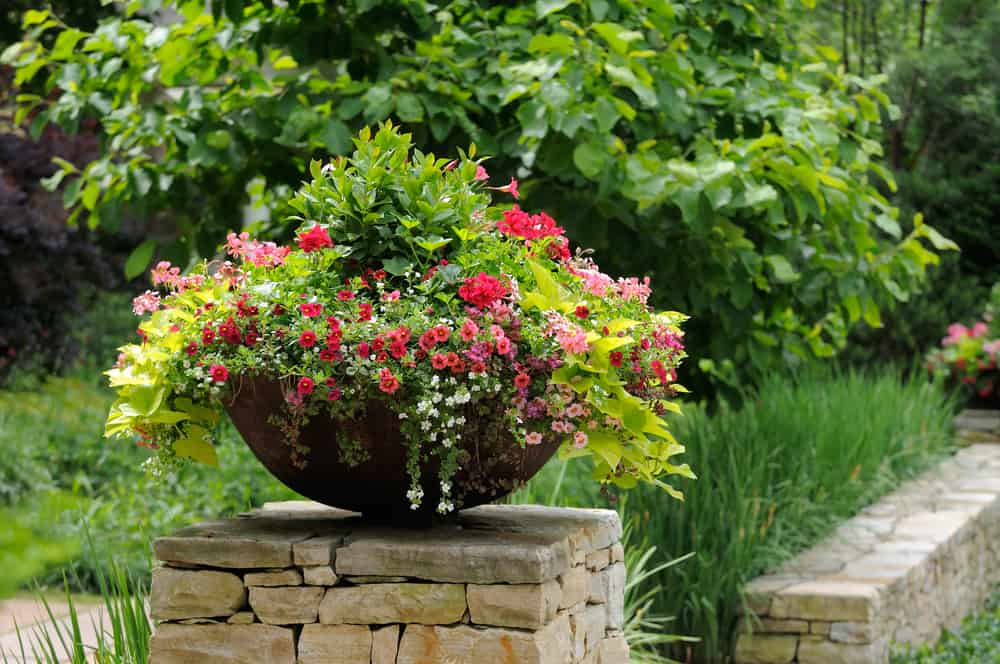
Before you begin planting, consider arrangement within your pots, and the garden as a whole. A small plant in the center of a container surrounded by large plants will be completely lost and (at least in terms of design) may as well not be there at all.
Place the tallest plant in the center or at the ‘back’ if the pot is placed in a corner. This is the main focal point – the star of the show. Surround the center plant with smaller, complimentary plants called fillers. ‘Filler’ may not be a very dignified term, but they serve an important purpose – highlighting the main plant and adding another level of interest.
The edges of a pot are ideal for trailing plants – as if they are spilling out of the pot. And they also make a good cover for any unsightly marks on containers. It comes down to three fundamentals: thriller, filler, and spiller.
When arranging your pots, apply the ‘Rule of Three’ by grouping pots of different heights together in threes. Add one or two tall plants in each grouping to ensure the garden does not appear one-dimensional.
Combine plants of different types – flowers and foliage, or shrubs and succulents – in the groupings of three to add variety. Container gardens are the only place you can sit two plants with wildly diverse needs next to each other (albeit in separate pots) – take advantage.
5. Think About Your Surroundings
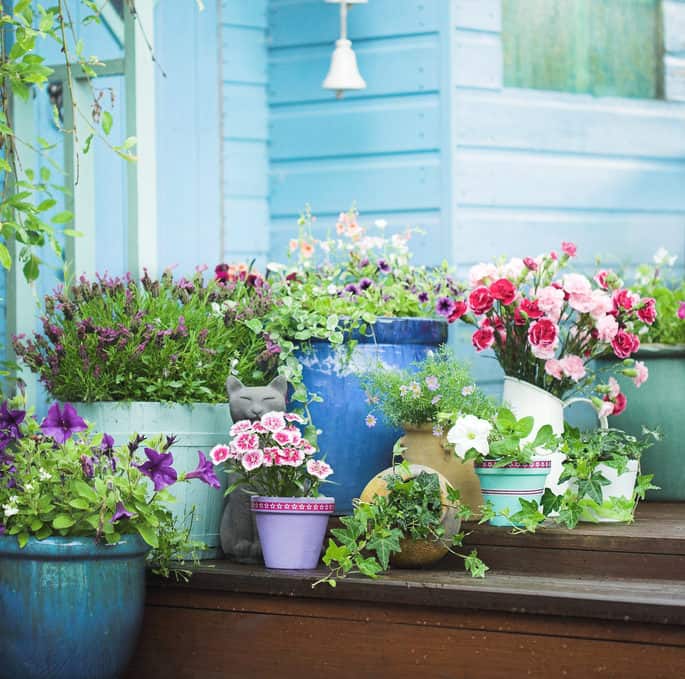
Whether your container garden consists of two pots or twenty, it should always be in harmony with the wider surroundings. That may be the rest of your garden or the furniture on your balcony, but the same principle applies.
The container garden should blend into the surroundings. Larger pots can be placed anywhere in a garden and hold their own, but smaller containers should be elevated or used to complement other pots to avoid getting lost in the scenery. You may perfectly balance color, texture, structure, and movement within one pot, only to find its beauty diminished when compared with the surrounding plants.
But that’s the benefit of container gardening – your pots can easily be moved until you find the perfect spot.
Container garden design is all about experimentation. Try these tips for yourself and see which works best for you.
Get outside your comfort zone and pick a design you’re not familiar with – you may surprise yourself. And at the end of the day, if you’re not happy, you can always change your mind and repot – an ideal gardening practice for the indecisive.
